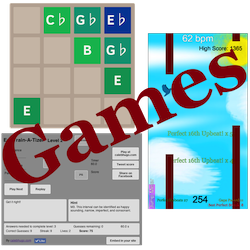A person’s definition of good is largely based on past experience and knowledge. Therefore our minds tend to prefer art that is familiar to them. If the music is not familiar in any way, then it will not be perceived as music because our minds will not recognize it due to a lack of exposure to that category of sound. So our evaluation of music is determined by the amount of familiarity that we have with the sound. However, there is another device with which we should evaluate the art we perceive. This component is sadly not used by many people, but is the only universal gage that we have to decide what is worthwhile for us to take into our minds.
The amount of intention in art should be our primary method of evaluation. Without intention there is no art, but only the seemingly random pallet of sounds that was originally provided for the artist to create with. Music is a particularly intriguing form of art when taking the amount of intention into consideration, because it is impossible to intend every aspect of the sound that is being planned in the case of the composer, or created in the case of the performer. An element of chance is always going to be present and complete control over a performance is unfeasible. But despite this, in order for music to be of quality an acceptable level of intention must be attained.
In polyphonic music chance is particularly frustrating for a composer because no matter how much intention is used to craft the work, the end result depends upon the performance. It is also frustrating for the performer because the result depends on the tools at his disposal (this includes his skill and intellect). So it is the composer’s duty to make sure that his compositions are well within the realm of possibility and that the potential intention is maximized. It is the performer’s duty to make the plan for the work be brought fourth into reality and then also to polish the details of the sound that cannot be fully planned by the composer (timbre, specific placement of sonic events, etc). Therefore the quality of this music is dependent upon the combined amount of intention from both the composer and the performer.
In the case of electronic music, the performer is for all practical purposes eliminated and replaced by a computer. Since computers are not capable of intention outside of what they were programed to do, every aspect of planning the performance is left up to the composer. So not only does the composer have to make decisions on aesthetic, what pitches happen when, orchestration, volume, etc., but he must also determine the specifics that are usually up to the performer. This is a potential explanation for why so much electronic music is not well done. It takes a highly trained musician to draw the plans for a performance, program synthesizers that create a highly intentional timbre, and place every event with purpose. Massive amounts of thought from primarily one person is needed to bring electronic music to an acceptable level of intention. Creators of electronic music must also take into account that the performance is to be produced with a speaker system, and the sound must be planned well enough to be intentional while being played by a speaker system that is not designed to have much potential.
Recorded music lies somewhere in between a live performance and electronic music. While it was performed in real time by a performer, it has been transcribed for a computer or an analog device to be read and reproduced. What results is an electronic representation of what actually existed. The amount of intention in the recording does not only reflect the amount of intention from the performer and the composer, but also the sound engineer, the quality of the recording equipment, and the quality of the sound system reproducing the performance. Because of all of the people involved in making this music, I find that this method may have the most potential.
Recording introduces a whole new element to sound organization because it is now possible to choose which sounds are used and then replace sounds that have unacceptable levels of intention. This is why recording is completely different from performing: The performer now has the ability to show the audience what is theoretically possible rather than simply showing a random example of what he or she is capable of. Some performers believe that altering a recording is dishonest, but this stance completely defeats the purpose of recording. Our goal is to make a sound with as much intention as possible, and this cannot be done in real time. If a recording is to be made, the result should be as good as possible; to not alter a recording is to withhold from your audience the best sound available. If more intention is possible, it should be applied.
Bear with me as we ponder the exception to our rule intention creating quality. Unintentional events can be artistic, but the amount of randomness must be intentional. For example, a high quality synthesizer will give the programmer the option of randomness. As a programmer, I find this feature to give the timbre an organic nature causing it to be far more pleasing to most ears. Random as that part of the sound may be, it is still intentional. But a degree of randomness adds beauty to a sound, which gives us the ability of say that a sound does not have to be fully intentional to be perfect. On the contrary, a fully intentional sound is bland and unchallenging because it is so predictable. A degree of unpredictability is part of what makes music so beautiful.
We must take these ideas into account as we choose the music we pay for and listen to. If most of the sound we are recognizing as art needs little to no preparation to create, then we have to ask ourselves why it interests us. I think we will find that we listen to some music simply because is does not ask us to interact with it due to the fact that so little is generally being done. Simple music has its place, but to listen to it constantly weakens your mind. Listen to music with massive amounts of intention in the sound. Don’t settle for any less simply because that is what you enjoy listening to. Challenge yourself to understand greater art. When your mind grows weary then listen to simple music, but don’t linger for long.

